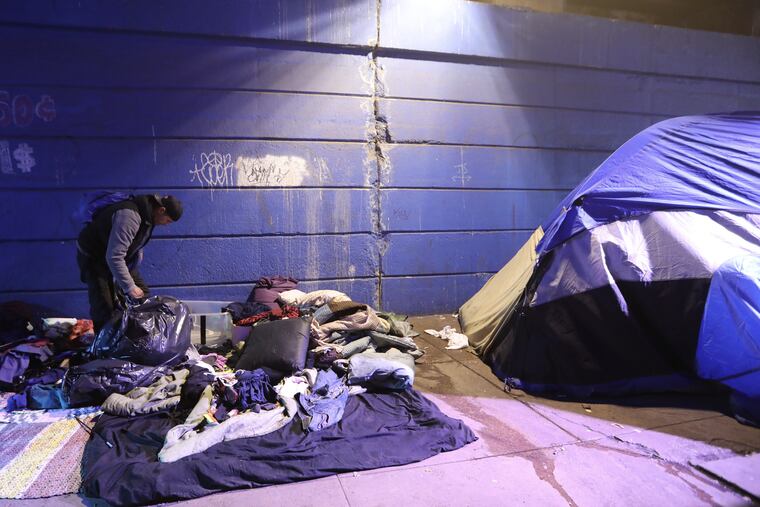Philly makes headway in Kensington opioid crisis six weeks after disaster declaration
Project Resilience — the opioid disaster declaration in Kensington — has made big progress in barely 6 weeks, with one significant disappointment.

In just six weeks, the city has managed to move mountains, literally and figuratively, to tackle the opioid crisis in Kensington — with one significant disappointment.
Officials still haven't found a place for a shelter that would connect homeless people in addiction to social services — a "navigation center" that continues to be a hot button for the neighborhood.
That picture emerged Friday as representatives of city departments met with Mayor Kenney and others in a Kensington community center to report progress on "Project Resilience." The innovative disaster declaration is designed to break down bureaucratic barriers so city government can better combat the city's opioid epidemic at its epicenter. The project involves a series of goals; Friday's event celebrated the completion of a set of short-term goals.
"When we launched Project Resilience about a month ago, a lot of us up here were skeptical," said First Deputy Managing Director Brian Abernathy. "I'm sure a lot of you in the audience were skeptical. I'm very proud of what this team has been able to do."
The most recent, most visible sign of success was this week's removal of the large heroin encampment under the Frankford Avenue railroad bridge. Of 51 people living there, 45 were moved to a nearby shelter, their tents and belongings packed in plastic bins. It was the third major site to be cleared, leaving just one, on Emerald Street.
Assistant Deputy Managing Director Beverly Woods conceded that eliminating encampments is a constant push-pull. "If you drive past Frankford Avenue today, you will see nothing," she said. "If you drive by Emerald Street, you'll see a bit of an expansion."
The city has also made progress toward creating a navigation center, even though the location remains up in the air, said Liz Hersh, director of homeless services. A dozen possible sites have been visited, a tentative budget has been developed, and an operator for the facility has been lined up, although Hersh declined to be more specific.
Hersh praised the "humane and responsible" way police, outreach workers, and others have handled the process of cleaning up encampments. "We haven't just hosed people, or dumped their stuff in dumpsters, or given them bus tickets out of town," she said.
Councilwoman Maria Quinñoes-Sánchez repeated her adamant opposition to locating a new navigation center in Kensington, which is part of her district. The impoverished neighborhood already has two facilities dedicated to sheltering and helping people in the throes of addiction.
"I'm going to continue to push back," she said. "We are overburdened. … You cannot set up any more sites in Kensington."
Resident Donna Aument, 71, who has lived in the 700 block of Willard Street since 1970, echoed that sentiment, declaring, "We can't take any more."
"They're laying all over the sidewalks … shooting needles right in their neck," Aument said. "And my grandson is seeing it."
The brief acrimony was in contrast to the overall sense of pride and accomplishment. Project Resilience set out to reduce crime, trash, and overdoses — as well as homelessness and addiction. Among the short-term goals achieved by Friday's deadline:
Five schools have been picked to create "safe corridors" with better lighting and volunteers who will escort children to and from school.
Police and community services have begun a pilot program to redirect low-level offenders involved in drugs and prostitution to social services instead of prosecution and jail.
A 311 line has been dedicated solely to service requests from Kensington residents.
Mobile medical teams have been vaccinating injection drug users against hepatitis A, and providing information on addiction treatment. The teams have stepped up distribution of naloxone, the opioid overdose reversal drug, and opioid-replacement drugs such as methadone and Suboxone that make long-term recovery far more likely.
A trash clean-up was held on Kensington Avenue, with more scheduled, and needle drop-boxes were placed in strategic locations including McPherson Square.
"We set an aggressive and ambitious timeline," Kenney said in thanking his staff, community groups and residents. "You've done a tremendous job."